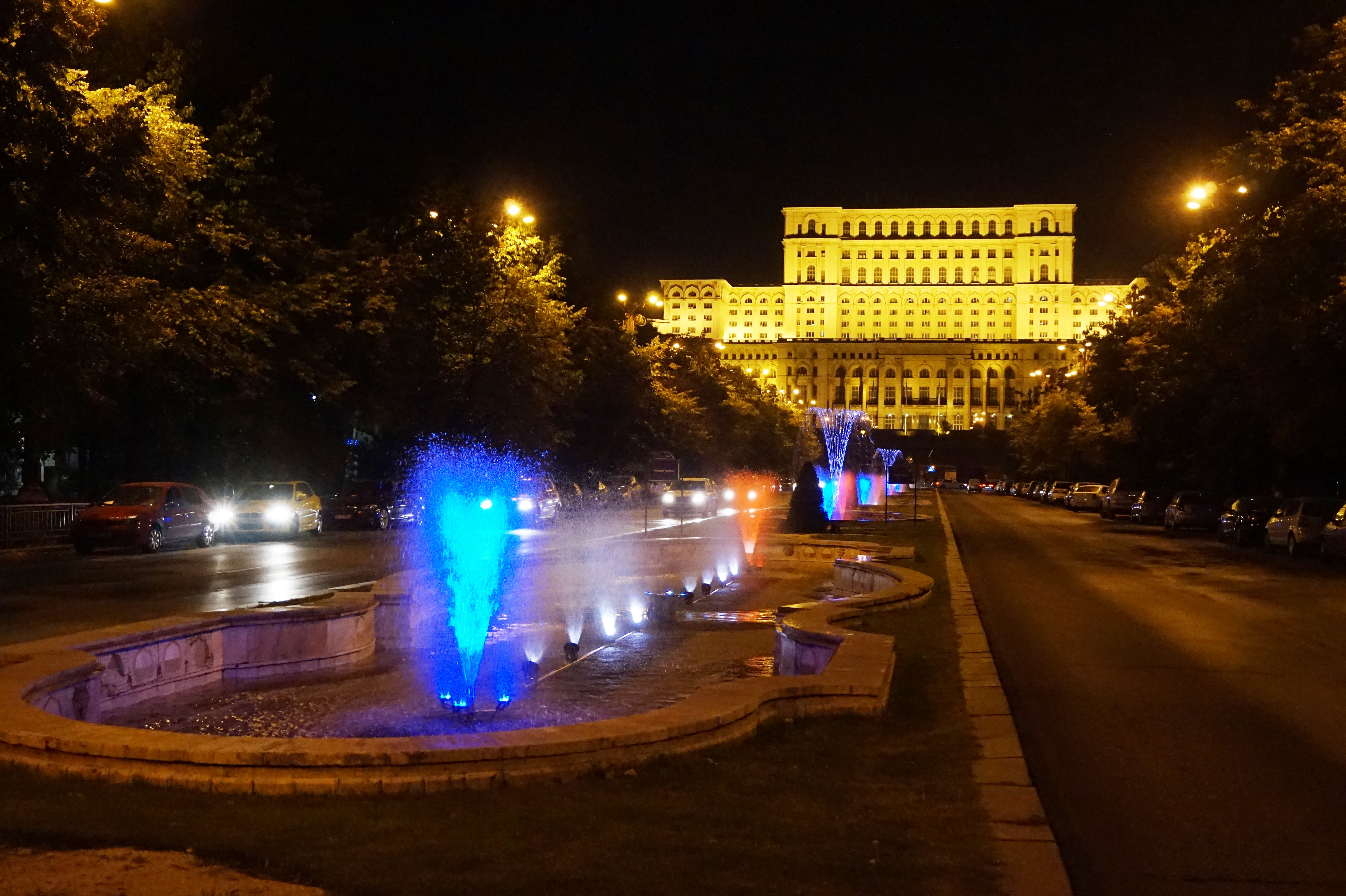
Bucharest is the largest city in Romania, which is nicknamed “the Little Paris”. Although not as popular as other European cities, there are many unique and hidden places to see Bucharest. Strolling along the streets of this surprising city, you will find yourself in a time of forgotten past. The building walls will tell you the story of horse and carriage, long fascinating dresses and soldier uniforms. Keep walking, and you will discover the power of a dominating era transformed into a place of freedom. The little streets will invite you to experience their flavor; the boulevards will dazzle you with their shine. Come evening, the city calls for you to move into its rhythm and join one of the million different parties.
Here are the many sights in this dynamically growing city, to add to your travel bucket list.
Table of Contents
The Palace of Parliament (Palatul Parlamentului)
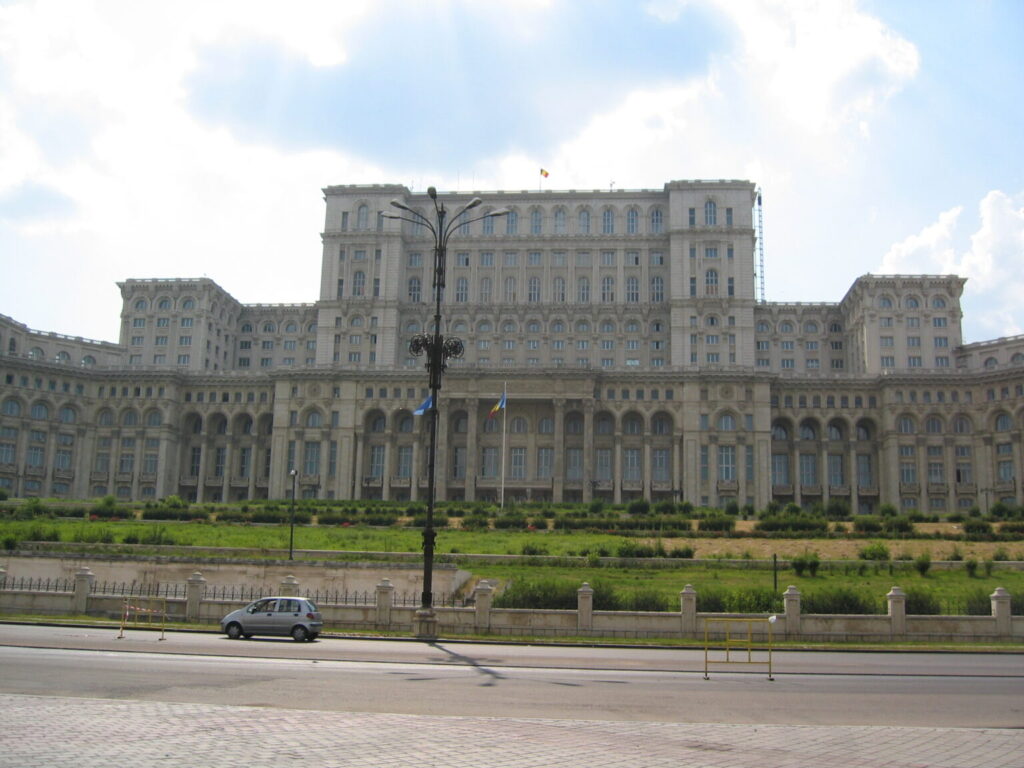
This palace, built in 1989, is the second largest building in the world after the Pentagon in Washington, D.C., covering an area of over 300,000 square meters. It was built for Nicolae Ceausescu, who did not live long enough in this building to officially inaugurate it, as he was executed in 1989. Fun fact: back when the Parliament was being built, the electricity would be shut down for a few hours every day, in order to save money. Travelers can participate in a guided tour of the Parliament, to experience the 1000 rooms, 440 offices, over 30 halls and salons, and the concert hall.
Address: Strada Izvor 2-4, București, Romania
Getting there: M1 subway line to Izvor station, then walk 20 minutes.
Opening hours: 10:00-16:00 (last tour at 15:30)
Tickets: Click here
Important: they will ask for a piece of ID when signing up for the tour. Foreign travelers must carry their passport, and not just any piece of photo identification.
Unirii Square (Piata Unirii)
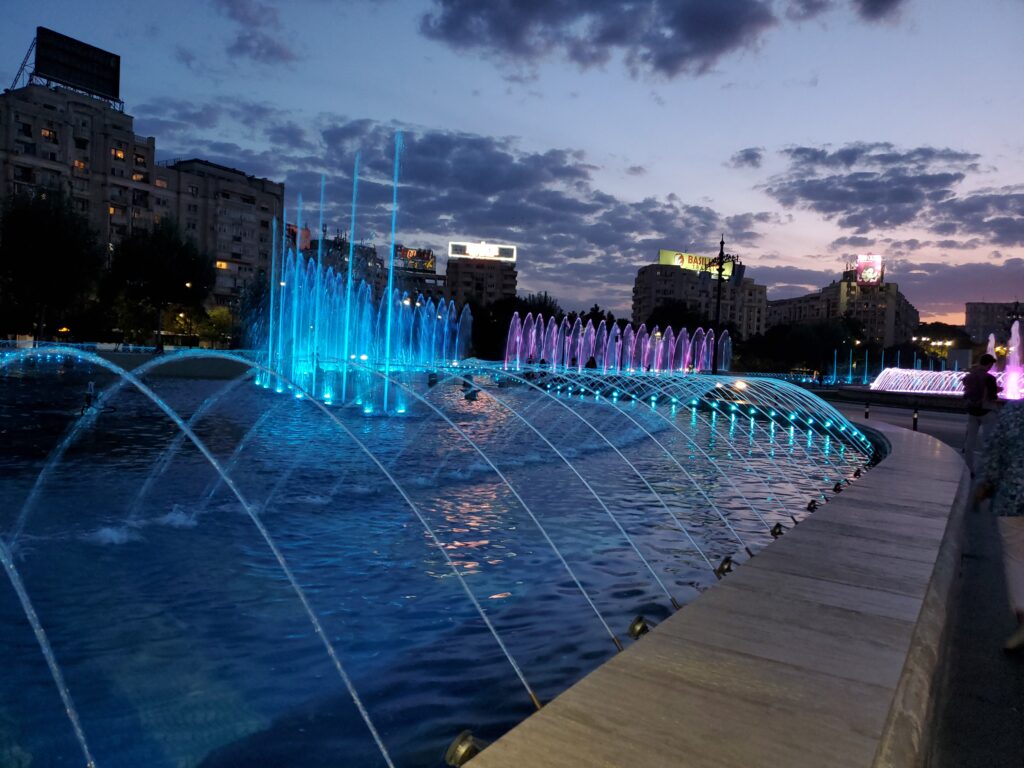
A short walk east of Parliament Square down Unirii Boulevard, Unirii Square is the largest square in the city center. 4 different sectors of the city meet at this spot. One can find a shopping center, lots of retaurants, and this is where the Centrul Vechi (Old Town) begins. Unirii boulevard was built during the communist era, and was called Boulevard of the Victory of Socialism. It was renamed as Unirii Boulevard after the revolution in 1989. Walking down Unirii boulevard, one can find over 40 fountains of different sizes. The fountains are synchronized, providing sightseers a beautiful fountain show as they walk or drive by the fountains. It is even nicer at night, when the fountains change colors.
Address: located in Piata Unirii (Unirii Plaza)
Getting there: M1/M2/M3 subway line to Piata Unirii station
University Square (Piata Unversitatii)

About 3 km north of Unirii Square can be found University Square. This square celebrates the scholars that supported Romania’s education over the 20th century. The square also contains the statue of Mihai Viteazul (Michael the Brave), who ruled the country at the beginning of 1600s and united all of Romania’s provinces. Back then, Romania had only 3 provinces (Wallachia, Transylvania and Moldavia).
Geographically, University Square is km 0 for calculating distances from Bucharest to the rest of Romania and the world, and there is a reason for that. Here, a series of violent demonstrations called the Mineriads (in Romanian, Mineriadă) occurred during the early 1990s after the revolution. Although Ceausescu died in 1989, the leaders of the country were still communist. People were against communism, and would protest at University Square. From the balcony of the university, there would be writers, dissidents and all democratic forces who would protect against communism. The communist power violently killed the movement by calling the Miners from Jiului Valley. This is why this place is considered the area free from neocommunism.
Next to University Square, one can find the InterContinental hotel, which is a symbol of the city. One can climb to the top of the hotel for a panoramic view of the square and the old town, and the Parliament can be seen in the distance.
Getting there: M2/M5 subway line to Universitate station
Revolution Square (Piata Revolutiei)
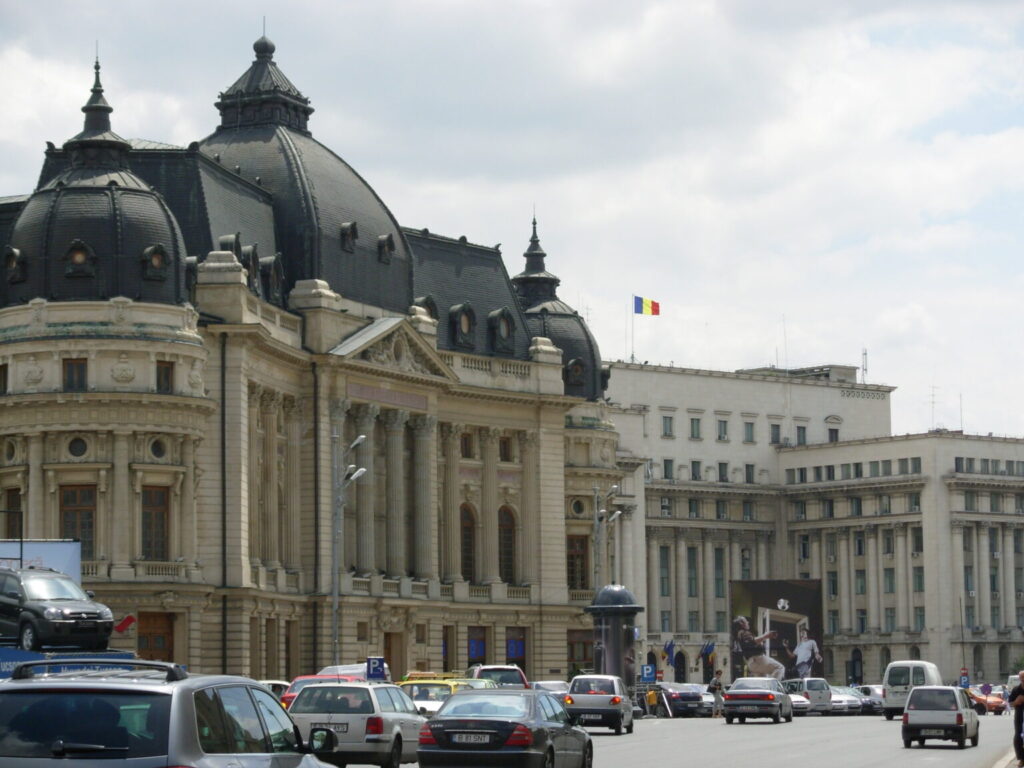
As the name sums up, Revolution Square was named after the revolution in 1989. Before that, it was called Piata Palatului (literally Palace Square). It was at this place on December 21, 1989 that the administration of Nicolae Ceausescu collapsed. In this square, located next to the University Library and the National Museum of Romania, was the central committee of the Communist Party of Romania. This is the place where over 100,000 people were brought by Nicolae Ceausescu and his ministers for a large demonstration to support his criminal actions in killing the people of Timisoara, where the uprising of the revolution began on December 16. Ceausescu and his people were not able to control the crowds, and he was booed. Everything was captured on national television. People started to arrive in the square, and the fight started and extended across the city center. Ceausescu and his people brought the army, but it was too late. And that marked the end of an era. Ceausescu was shot 4 days later on Christmas Day by a group of so-called “revolution leaders”.
Getting there: Buses 138, 168, 268 or 368
The Old Court (Curtea Veche) Museum
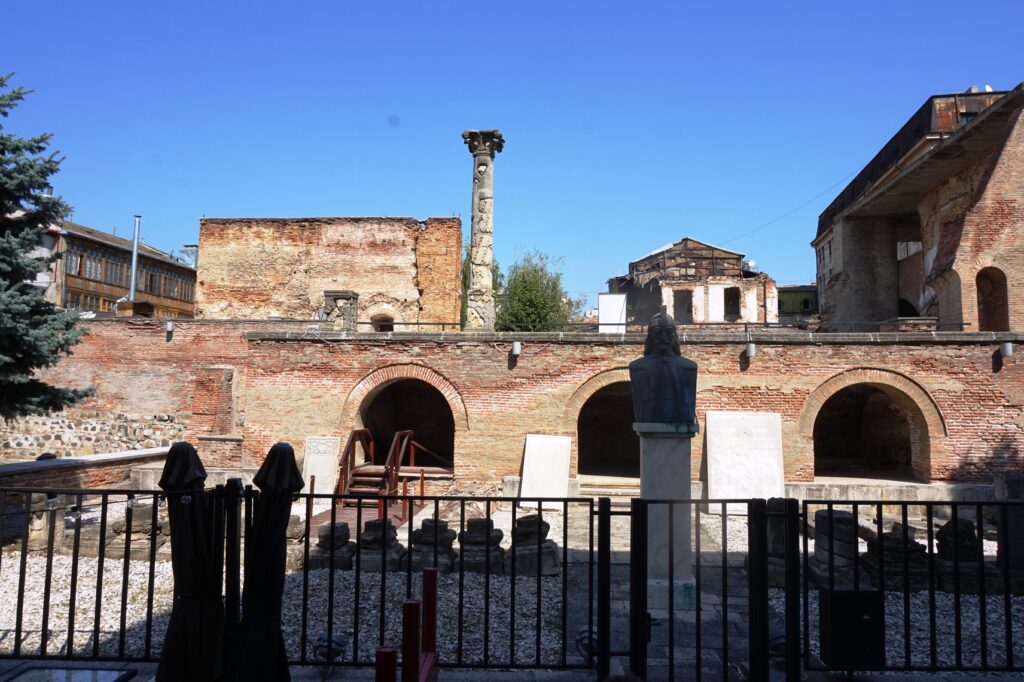
The Curtea Veche museum, contains the oldest historical edivence of Bucharest, dating as far back as the 13th century. The museum is the grounds where Wallachian rulers had lived, between 1459 and 1660, while the country’s capital city was Targoviste (located 1.5 hours outside of Bucharest). In 1660, Bucharest became the capital. When walking along the streets towards the Curtea Veche, one will notice that the museum is an archeological site, located in the heart of the old town. After 1798, a large part of the terrain was transformed into modern streets and neighborhoods. What remains today was arranged and polished in 1974 to keep the historical print of the 18th century, along with the wall fragments from the era of Vlad Tepes and the foundations of the city’s first residence.
Address: Strada Franceză 21-23, București 030167, Romania
Getting there: M1/M2/M3 subway lines to Piata Unirii station, or buses 14, 21, 40, 232, 104, 178.
Opening hours: 10:00-18:00 daily
Calea Victoriei (Victory Street)
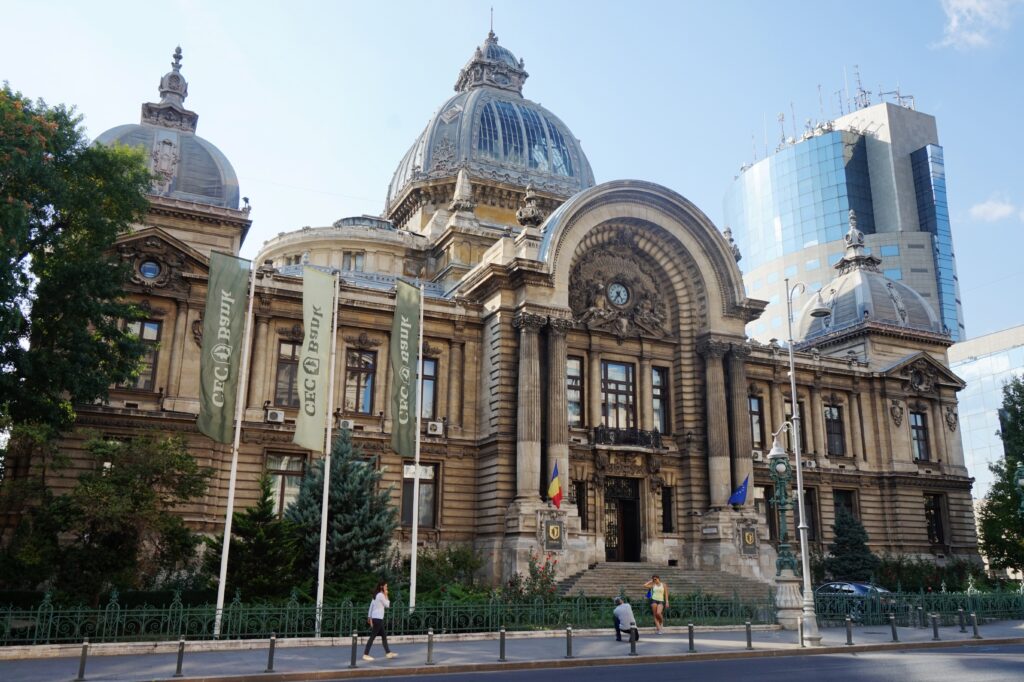
This historical 2.7-km street is the main artery of the city, and one of the oldest streets in Bucharest, dating back to the era of Nicolae Ceausescu’s dictatorship. The street begins southbound from Piata Victoriei (Victory Plaza) and ends at the Dambovita Quai, very close to Unirii Plaza. To cover the entire street, take the metro to Piata Victoriei station, and follow the street southbound from there. The walk can take around 1.5 hours, however, in order to experience the history and culture, one can spend up to 6 hours down this 2.7-km street. Calea Victoriei passes through Revolution Square, the George Enescu Museum, the National Museum of History, the Museum of Art Collections, the Romanian Athenaeum, as well as the National Military Circle. The many cafes, restaurants and display of different architectural styles show how Bucharest got its name as “Little Paris”.
Getting there: If you wish to walk southbound, the nearest subway station is Piata Victoriei (M1/M2 lines). If you wish to walk northbound, the nearest metro station is Piata Unirii (M1/M2/M3 lines).
Triumphal Arch (Arcul de Triumf)

The Triumphal Arch is located in the northern part of Bucharest, right by the entrance to the Herastrau Park. This arch is not located in the city center. This arch makes you feel like you might be in Paris, hence another attraction that earned Bucharest the name of “Little Paris”. It was originally erected for the troops to march under it on the way into the city. The second structure was rebuilt at the same spot in 1922 after WWI ended and lasted for 13 years. It was then rebuilt with granite from Deva (a place in northern Romania), to make it last much longer.Just like in Paris, one can climb a staircase to the top of the monument to get a view of the city.
Getting there: Take the M2 subway line to Aviatorilor station
Romanian Athenaeum (Ateneul Roman)

Architect Albert Galleron erected this Neo-classical style building, with its baroque cupola, in 1887. This ionic temple is the home of the famous George Enescu Philharmonic Orchestra, which holds important classical music concerts every week. It is a symbol of the entire country.
Getting there: take the M2 subway line to Piata Romana station, or take buses 126, 168, 226, 368, 381 or 783
National Village Museum (Muzeul Satului)

The National Village Museum is an open-air museum, located next to the Herastrau Park. The museum showcases the traditional life in Romania’s countryside villages. Covering over 100,000 square meters, it contains over 270 authentic houses and farms from all over Romania. The museum also contains over 350 monuments and 60,000 objects in collections of the Romanian heritage.
Address: Şoseaua Pavel D. Kiseleff 28-30, București 011347, Romania
Getting there: Tram 41 to Piata Presei Libere (translated as “Free Press Square” then walk south 10 minutes. Alternatively, buses 331 and 335 stop right in front of the museum.
Opening hours: 10:00-18:00 daily
Entry fee: €4 for an adult. Kids are free.
Parks of Bucharest
Cismigiu Gardens
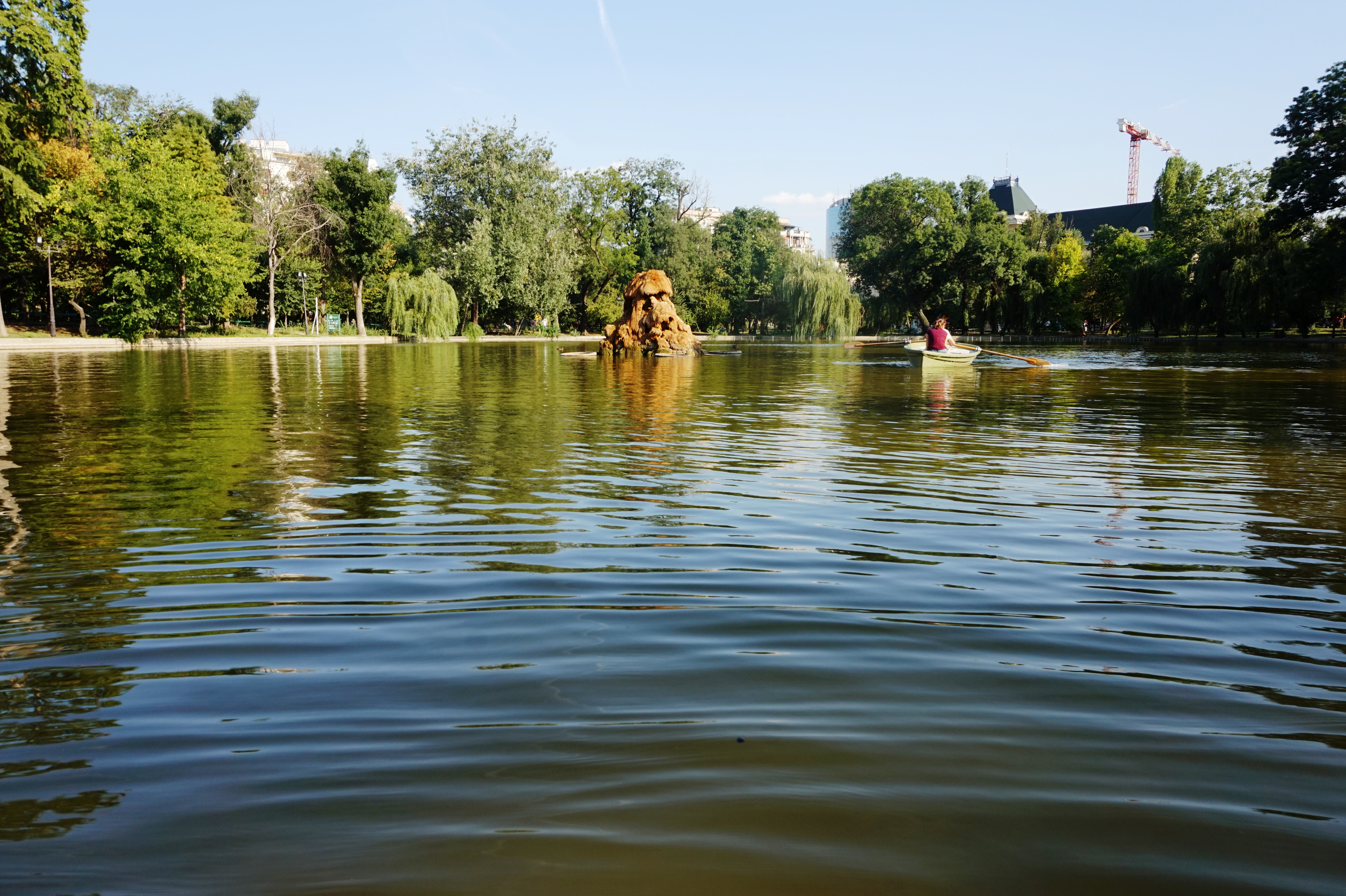
Located in the city center and across from the City Hall, Cismigiu Gardens is a vast garden with a beautiful boating lake, fountains, monuments of Romanian artists, and the beautiful Monte Carlo restaurant on the lake. Buildings dating back ot the pre-communist era can be seen from almost any point in the park. One can rent a canoe or paddle boat for a ride on the lake.
Getting there: M2 subway to Universitate station, then walk 10 minutes westbound along Mihai Kogalniceanu Boulevard.
Herastrau Park
Located about 20 minutes outside the city center, this park is a favorite for locals and visitors from across the country. The green grounds along the Herastrau Lake make it a perfect spot for a nice walk, bike ride, picnic, or simply to relax in the sun. The park contains many restaurants and terraces, perfect for a nice lunch or dinner in the nature. The park also has a nice Japanese Garden. Visitors can rent a canoe, or alternatively, take a boat tour along the lake. The park also has a spot where one can rent a Segway, for 30-minute or one-hour intervals. Tours are not provided by Segway, one can simply rent it and roam freely around the park. For visitors wanting an international meal, the Hard Rock Café of Bucharest is in this park!

Getting there: Take the M2 subway to Aviatorilor station. Alternatively, take tram 41 or bus 105, 331 or 335 to Piata Presei Libere terminal (translated as Free Press Square)
Botanical Gardens
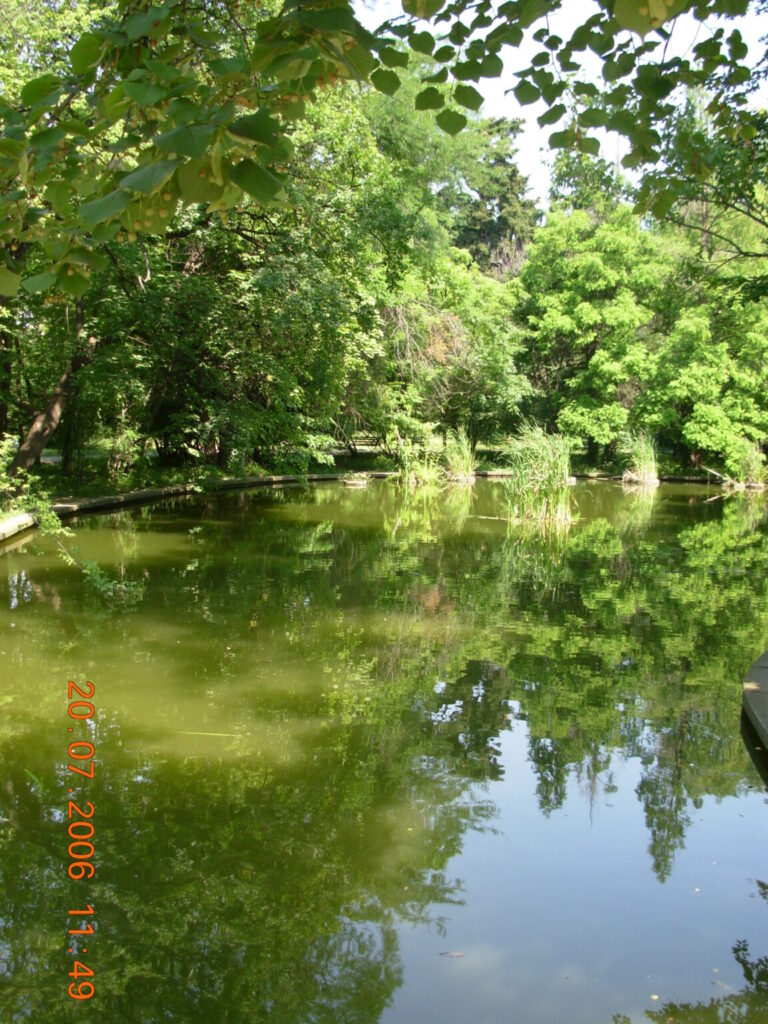
The Bucharest Botanical Garden is located in the Cotroceni neighborhood, not far from the city center, and covers an area of 17.5 hectares. More than 10,000 species of plants can be found here. This garden is also an institution of research and education, in the general process of awareness of the relationship between man and nature.
Address: Șoseaua Cotroceni 32, București, Romania
Opening hours:09:00-17:00
Getting there: take the M3 subway to Politehnica station, then walk 10 minutes eastbound along Iuliu Maniu Boulevard. Alternatively, buses 69, 90, 93, 105, 168, 268, 368 and 668 all stop right in front of the gardens.
Entry fee: €2
Carol I Park

Carol I Park is named after King Carol I, who was the monarch of Romania from 1866 to 1914. In 1877, he declared Romania as an independent and sovereign nation. The defeat of the Ottoman Empire in 1878, along with the Russo-Turkish War gained Romania its independence, and King Carol I was affirmed King of Romania on March 26, 1881. The park, located in the southern-central area of the city, contains a French garden capable of hosting various events. Originally called Parcul Libertatii (Liberty Park), this park was listed a historical monument in 2004.
Getting there: take the M2 subway Tineretului station
Best ways to discover Bucharest
Free Bucharest Walking Tour
One of my favorite ways to explore a city is to take a walking tour. Many cities in Europe (even the small cities) offer free walking tours. These tours are a great introduction to the city, the attractions and the history of the city. Although advertised as “free”, the tour guides make a living based on tips they get. It is not mandatory, but definitely recommended, to tip. The tour guides will mention that. I always tip €10-20. After all, the tour was completely free, so it would only be fair to them to get some sort of tips. At the end of the tour, the guides will answer any questions regarding food, bars, activities or transportation in the city.
The 2-hour tour takes travelers through 500 years of history, from Vlad the Impaler, to the 1989 revolution.
Bucharest City Tour

Bucharest also has a hop-on hop-off tour. Unlike other European cities, this tour is not operated by City Sightseeing. It is a local company, offering similar tours. The tour operates daily from 10:00-21:00, and takes travelers to all the attractions that this beautiful city has to offer. Without hopping off and back on, the tour is 50 minutes long. A one-day hop-on hop-off pass is only 25 lei (€6)!
